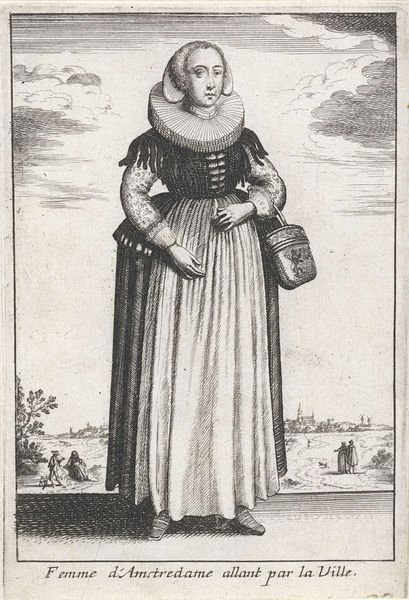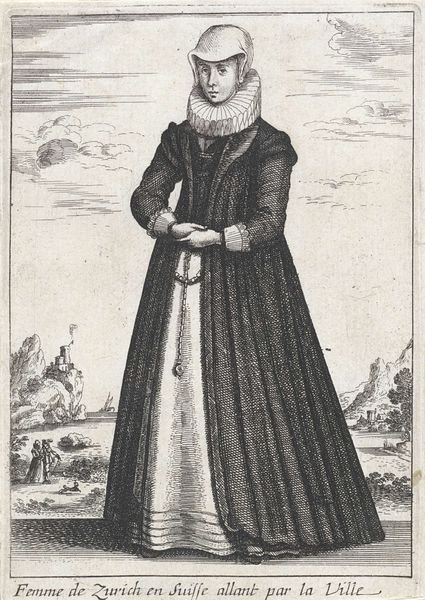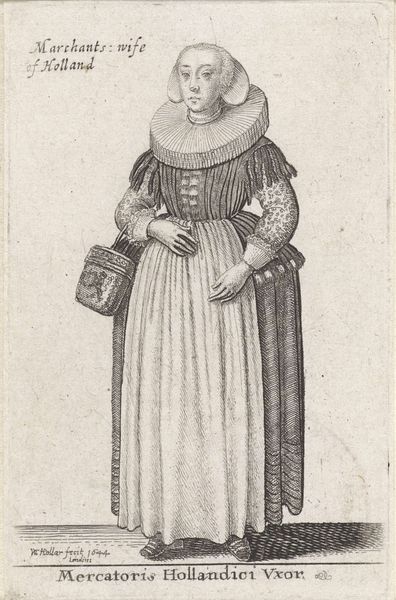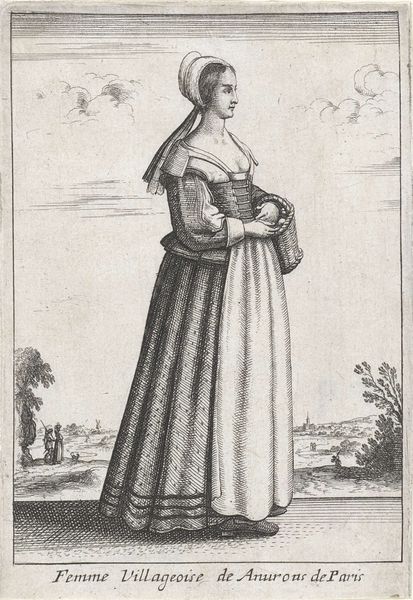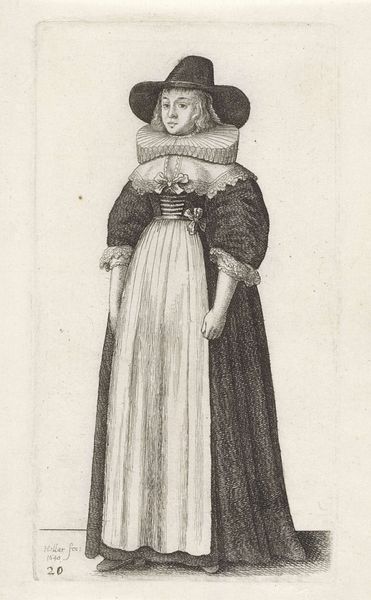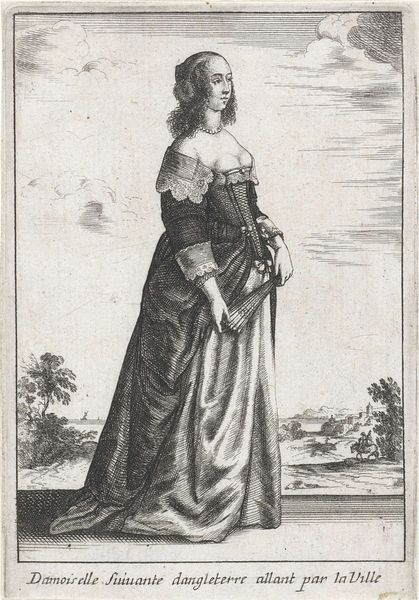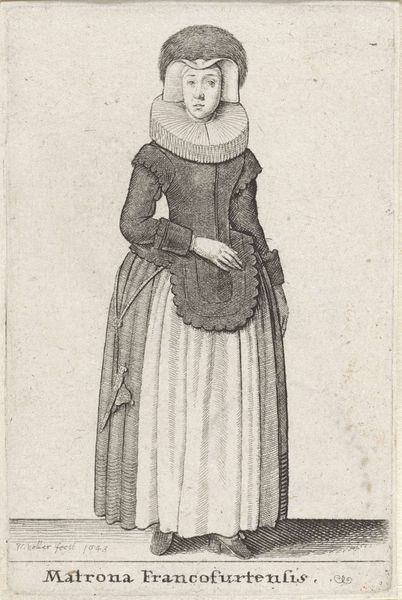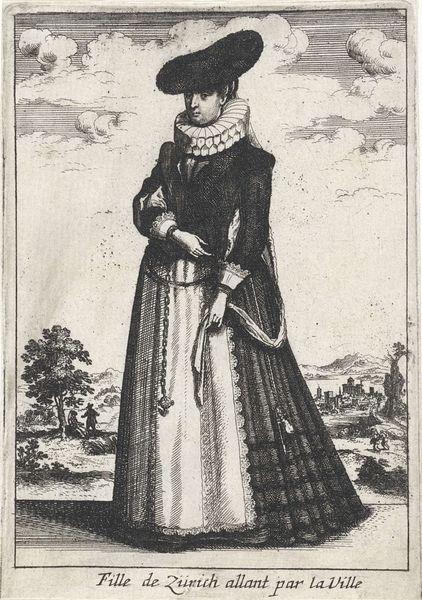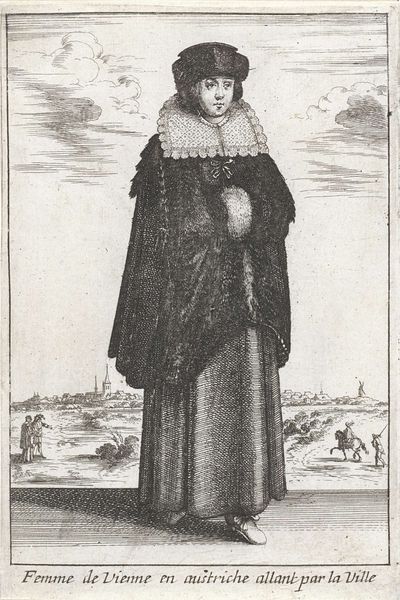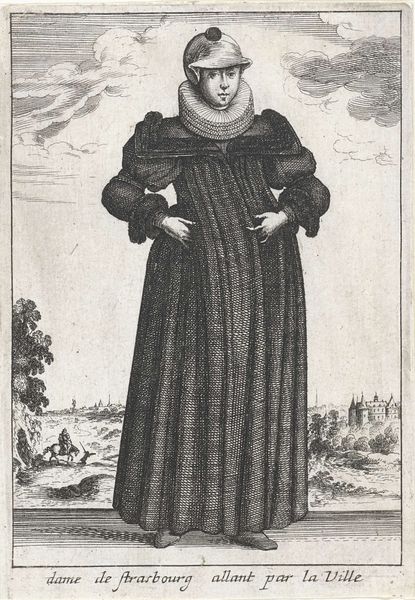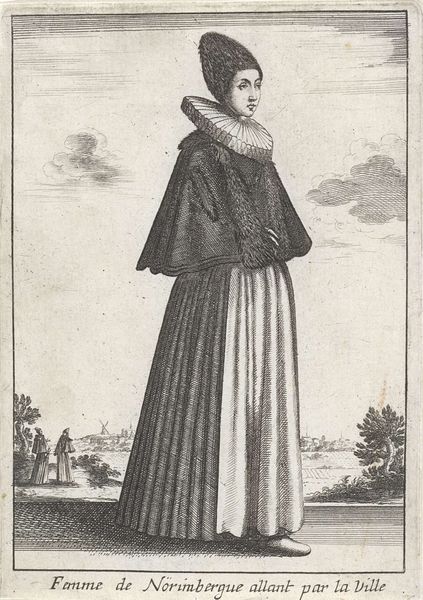
engraving
#
portrait
#
baroque
#
dutch-golden-age
#
old engraving style
#
figuration
#
line
#
genre-painting
#
engraving
#
realism
Dimensions: height 134 mm, width 95 mm
Copyright: Rijks Museum: Open Domain
Curator: This engraving, "Femme Palatine allant par la Ville", which translates to "Palatine Woman Going Through the City," dates back to 1662. Editor: She appears self-possessed, even stately, despite being set against what seems a very commonplace Dutch landscape. Curator: Yes, it’s fascinating how this work, a line engraving, depicts the intersection of high society and everyday life in the Dutch Golden Age. Note the craftsmanship—the delicate lines forming intricate details on her clothing, the subtle gradations that give depth. What were the economics of the time allowing for such an art object depicting an ordinary woman's activity. Editor: It's true, that level of detail and attention given to a subject who isn't a monarch speaks volumes. And "ordinary" is doing a lot of work here. Her clothing reads as wealth and status—and while we could perhaps understand more if we could ID her, the work certainly raises issues of privilege, access, and gender roles within the socio-economic landscape of 17th-century Netherlands. A Palatine woman would have had a great deal more freedom and power than the average. Curator: Precisely! The attire becomes a visual marker, not just of wealth, but also of belonging and exclusion. One must consider what labor and resources went into making and distributing a print such as this: from the artisan engraving the image to the merchants involved in the distribution, this work, in its physical form, connects with multiple levels of the period's material infrastructure. Editor: Thinking about this portrait as a commentary, even if subtle, on the lived realities of women with societal power invites a deeper consideration of identity and representation at the time. Were similar portrayals available to women across society's economic structures, or did such portraits focus on very specific and perhaps narrow segments? What are we to infer if there are few to none representing a woman's working class experience in 17th century Netherlands? Curator: Indeed, such comparative studies of artistic representations open fascinating avenues to contextualize the consumption and appreciation for these objects, especially for the social classes that commissioned or collected such works, and perhaps emulated the sartorial sensibilities depicted on them. Editor: Absolutely. It reminds us that even what appear to be simple depictions offer intricate reflections of their complex times. Curator: A wonderful artwork. Thanks for providing me your always unique insights.
Comments
No comments
Be the first to comment and join the conversation on the ultimate creative platform.
